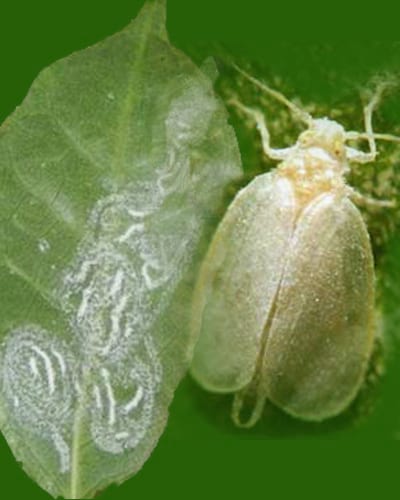The Rugus Spiraling Whitefly has a very broad host range from palms to woody ornamentals and fruits. RSW has been infesting gumbo limbo (Bursera simaruba), Calophyllum species, black olive (Bucida buceras), copperleaf (Acalypha wilkesiana), broadleaf arrowhead (Sagittaria latifolia), cocoplum (Chrysobalanus icaco), Brazilian pepper (Schinus terebinthifolius), wax myrtle (Myrica cerifera), live oak (Quercus virginiana), mango (Mangifera indica) and others.
It has also been seen on several palms which include areca palm (Dypsis lutescens), Veitchia species, and coconut (Cocos nucifera). Additional hosts are likely to be added to the current list.
This whitefly is closely related to the giant whitefly, Aleurodicus dugesii, and shares similarities. Like the giant whitefly, the adult is about 3 times larger than other whiteflies that occur in the U.S., and is more docile (slower moving) than other types of whiteflies.
The adult whiteflies collect on the undersides of the leaves to feed and reproduce.
The female whitefly lays her eggs in a spiral pattern on the leaves and also deposits a white, waxy substance on the eggs.
The crawler stage hatches from the eggs and crawls around before it starts to feed with its “needle-like” mouthparts. This stage is very small and difficult to see.
The crawlers will molt and go through several immature stages that are oval and initially flat, then more convex. These stages do not resemble a typical insect. Some immature stages will secrete long white filaments of wax. It will likely survive year round in south Florida.
The Damage is most noticeable symptoms of an infestation of this whitefly is the abundance of the white, waxy material covering the leaves and also excessive sooty mold. Like other similar insects, these whiteflies will produce “honeydew”, a sugary substance, which causes the growth of sooty mold.


